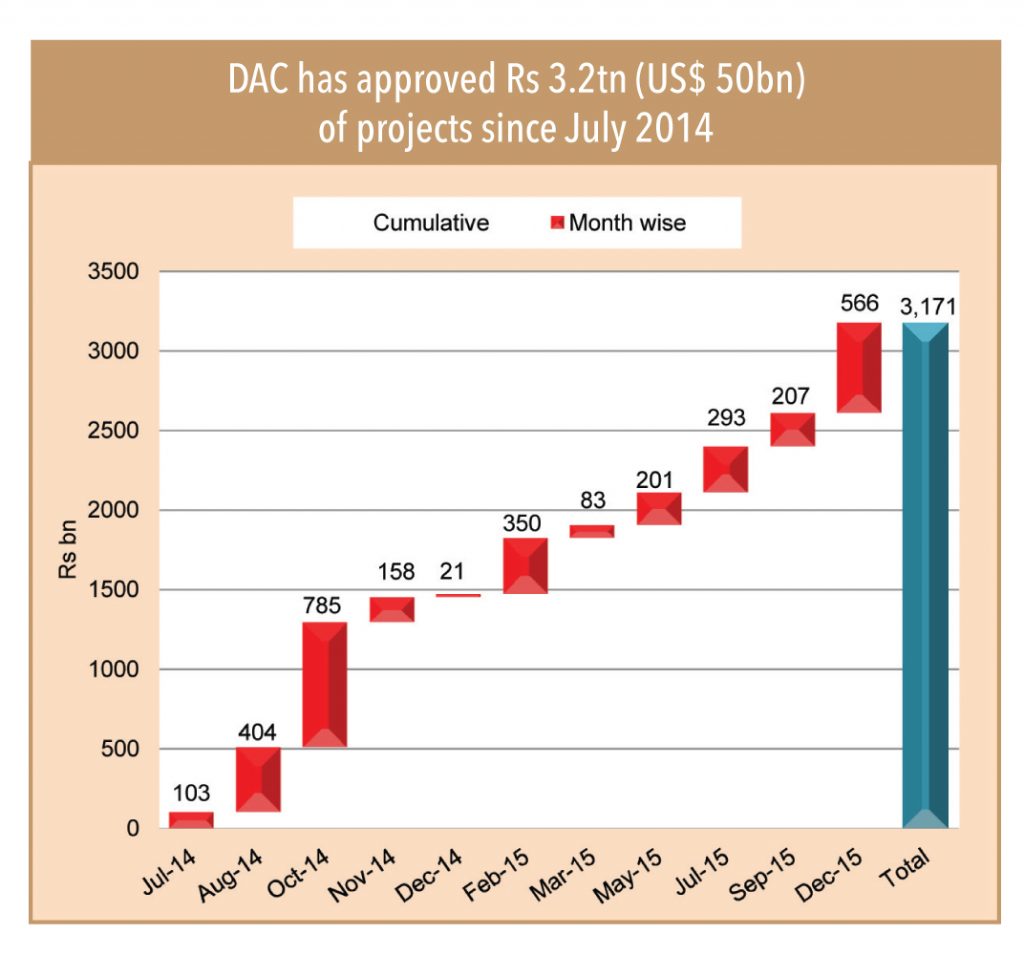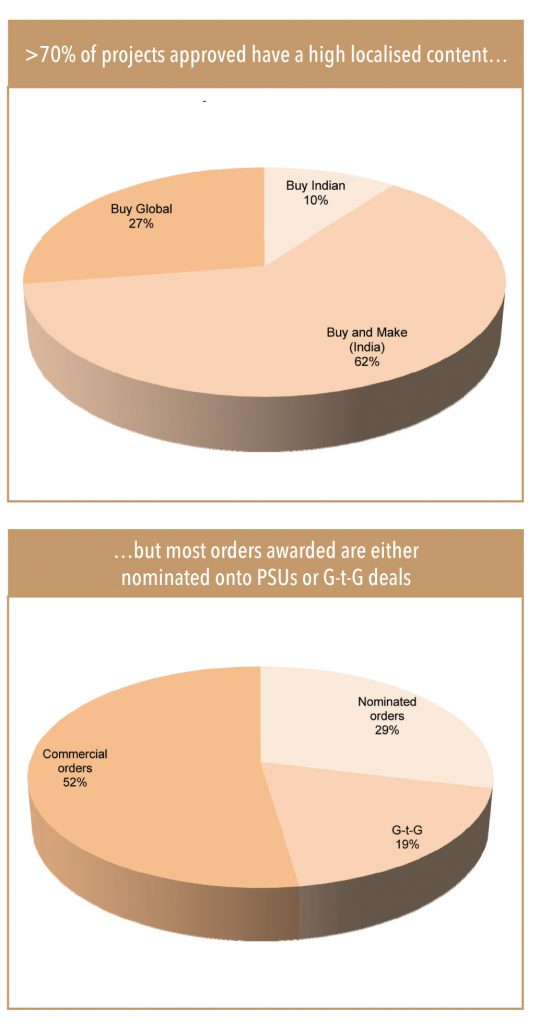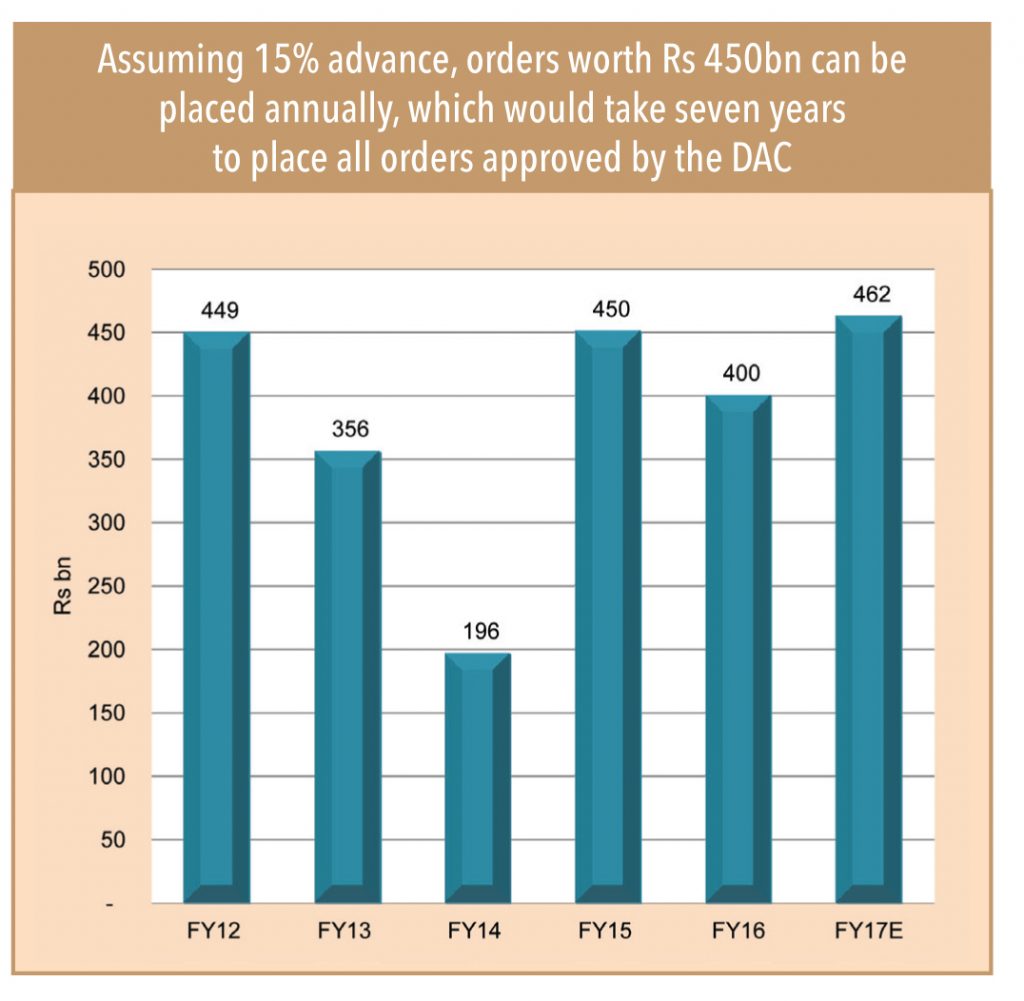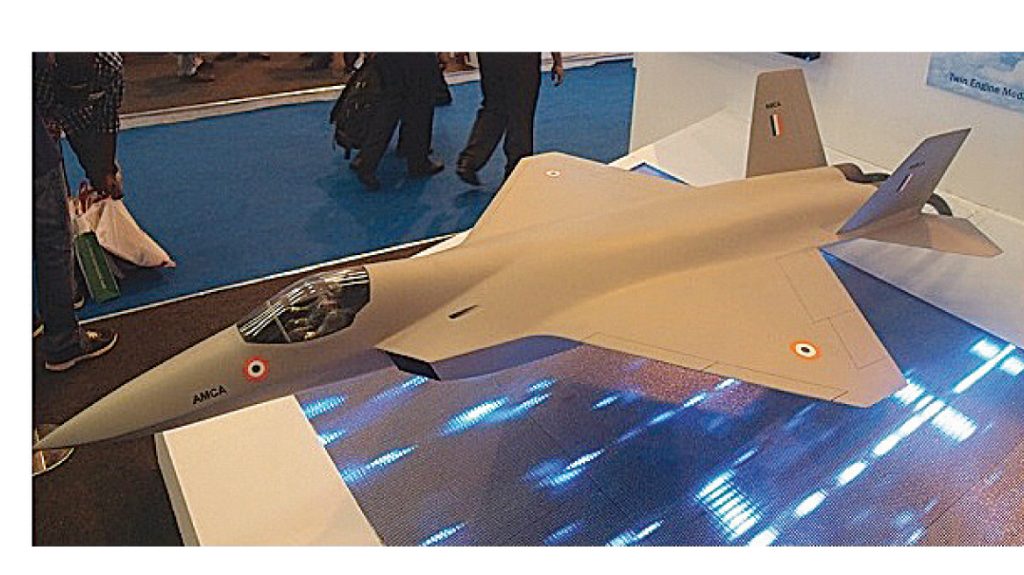DAC approvals suggest pick up in ordering…but,
Over the past 24 months, the Defence Acquisition Council (DAC) has approved projects amounting to Rs 3.2tn (US$ 50bn). This is indicative of the quantum of orders that could be potentially awarded over the next 3-4 years.
…on-ground feedback suggests otherwise
Interactions with stakeholders indicate that the pace of activity after the DAC approval has been slower and has not met industry expectations. Less than 10% of the projects that have been approved in the past two years have been awarded. Another 15% are on the verge of being awarded.
72% of the projects approved by the DAC are in the Buy (Indian) and Buy and Make (Indian) categories, which entail a higher indigenous content. However, projects that have progressed and awarded have mainly been government-to-government deals or nominated orders on public sector units. Landmark projects for the domestic private sector, such as P-75i submarines and mounted howitzer guns, have seen no movement. Request for proposals (RFPs) for these projects have not yet been published.
Delays are because of procedural bottlenecks and…
Most delays in ordering continue to remain procedural. Time lost on freezing specs in the RFP, time taken for field trials in a multi-vendor tender, and time spent in the CNC stage are the key bottlenecks in the process. The DPP 2016 has tried to address the issue of delays in floating the RFP by limiting the time between AON and RFP to 6-12 months from the earlier 24 months. However, progress on this front still needs to be seen as the DPP is not yet notified.
… mainly because India’s capital budget for new orders is limited
The primary reason for the delay in project awards is the unavailability of funds. For instance 90% of the FY17 capital budget of the armed forces is allocated towards ‘Committed Liabilities’ – payment towards orders placed previously – while only 10% of the budget is set aside for ‘New Schemes’. For instance, in the FY17 capital budget of Rs 717bn only 10% (Rs 69bn) has been allocated towards new schemes.


At current pace it would take seven years for all DAC-approved projects to be awarded
The allocation to New Schemes has largely remained flat for the past three years at Rs 60-70bn. This effectively should allow India to place new orders worth Rs 400-450bn (US$ 7bn) annually assuming a 15% upfront advance. At the current rate, it would take seven years for India to award all the contracts that have been approved by the DAC in the past two years, leave alone the projects that were approved by the previous government.


Based on Ground View’s interactions across stakeholders in the defence sector, the key message was that large marquee projects, which are in the public domain and for which various private sector groups are participating, will take at least another 2-3 years to be awarded. In the interim, the focus would be on relatively smaller companies (largely in the unlisted space) that stand to gain from the localisation efforts of the defence PSU’s.
Future programs:
F-INSAS:
Futuristic Infantry Soldier-As-A-System (F-INSAS) is a program of the Indian Army to enhance capabilities of future soldiers. The program is aimed at enhancing the “lethality, survivability, mobility, sustainability and situational awareness” for future soldiers.
F-INSAS is based on five major technologies: modular weapons, body armor and individual equipment, weapon sights and hand-held target acquisition devices, communication equipment to make soldiers capable of transmitting and receiving complex voice, data and video systems, and portable computers in the shape of “wrist displays’’ for soldiers and “planning boards’’ for commanders.
The program is spread over the 12th, 13th and 14th five-year plans (2012 to 2027).


AMCA
The HAL Advanced Medium Combat Aircraft (AMCA) is an Indian programme of a fifth-generation fighter aircraft. It is being developed by Aeronautical Development Agency (ADA) as the design firm with manufacturing carried out by Hindustan Aeronautics Limited (HAL) as the primary contractor and main assembly firm.
It is a single-seat, twin-engine, stealth super manoeuvrable all weather multirole fighter aircraft. Official work started in 2011 and completed in 2014. The first flight is scheduled to occur in 2023–24.
It is a multirole combat aircraft and combines supercruise, stealth, advanced AESA radar, supermaneuverability, and advanced avionics to overcome and suppress previous generation fighter aircraft along with many ground and maritime defences.
It will complement HAL Tejas, Sukhoi/HAL FGFA, the Su-30MKI, and Rafale in the air force service. The AMCA is intended to be the successor to the Sepecat Jaguar, Dassault Mirage 2000, MiG-23 and MiG-27 Bahadur. AMCA would be the third supersonic jet of Indian origin after the HAL Marut and HAL Tejas.
Subscribe to enjoy uninterrupted access